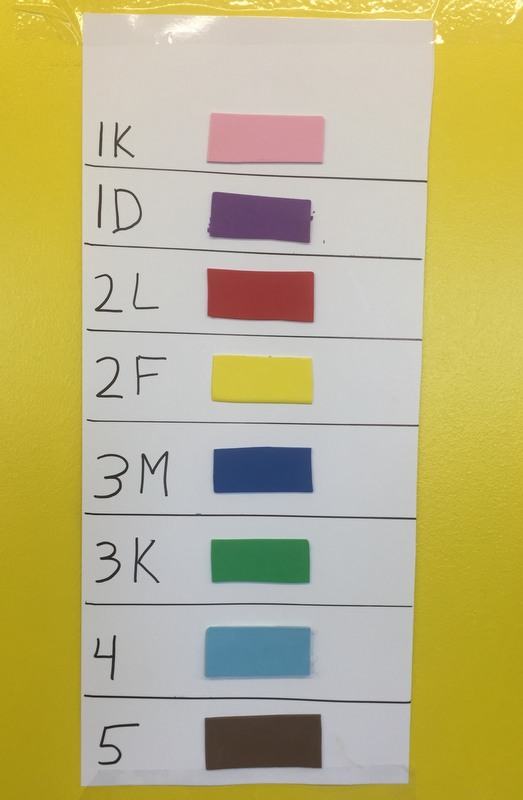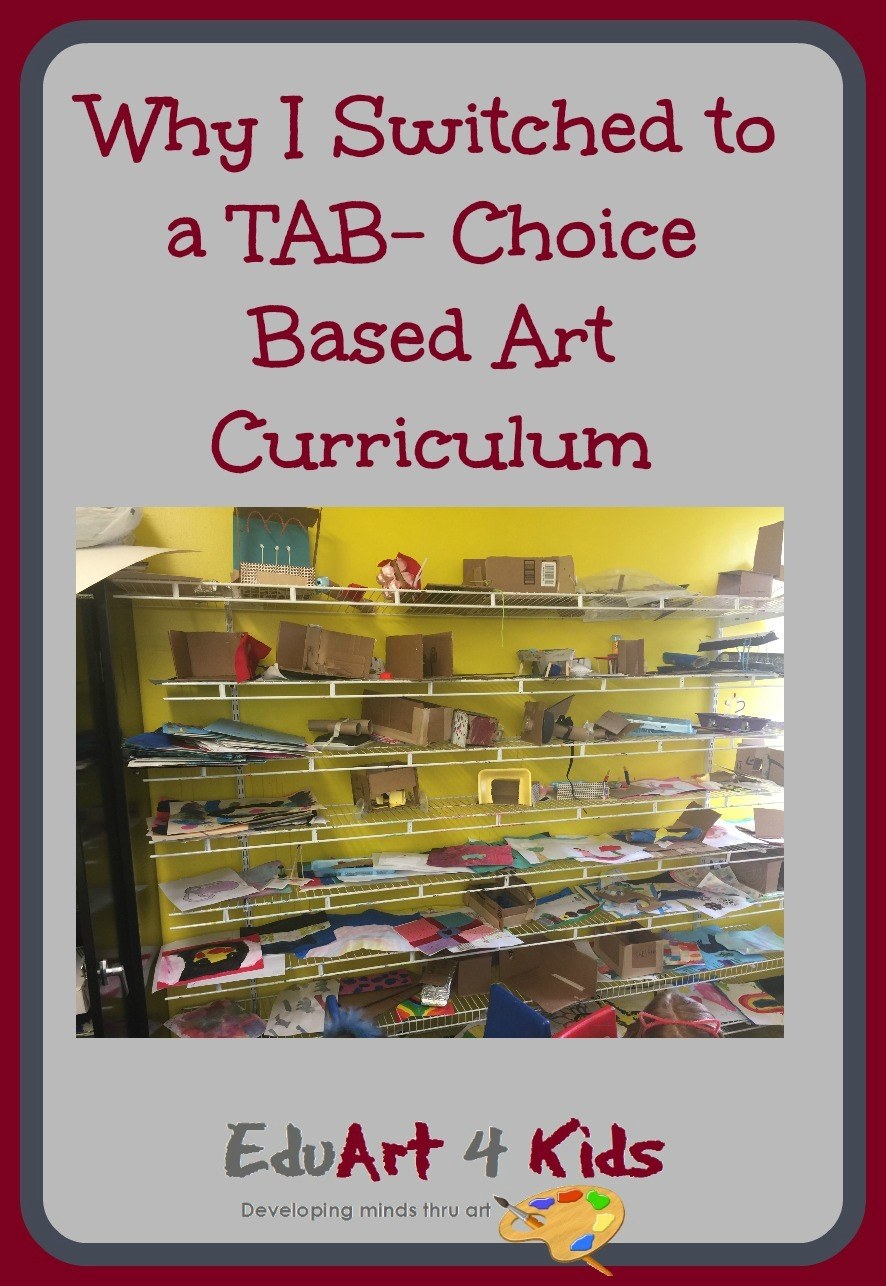Why I switched to a TAB-Choice Based Art Program
If you've been on this blog before than you know that my methods have always been to allow the children to think, solve problems and be creative through doing art. They always had lots of choice.
If that is the case and has always has been the case then why would I need a new method of teaching art? Good question.
TAB-Choice Based Art education takes art education to a whole new level.
As I was preparing during the summer to start the new school year of 2017-2018 I started coming across a lot of information on an innovative way of running an art classroom called TAB-choice based art.
I had seen it before but, hadn't payed attention but, this time it really caught my eye. And I started reading.....and getting really excited.
As I started reading about the centers that this method uses it reminded me of my years when I was an early childhood teacher. I taught in kindergarten by using centers and I always loved the energy, the hum, the independence of the children working in a center based classroom and TAB reminded me of that.
I set out to learn as much as I could about TAB eager to start implementing it. As
Diane Jaquith one of the founders of TAB says:
"Teaching for Artistic Behavior (TAB) is a philosophy of education that falls under the broad umbrella of choice in a TAB art program, every decision the teacher makes is for the intention of learner independence, either that day or in the future. A TAB teacher might have limited choices, at times..(to teach skills) have open-ended choices, starting from a common theme or prompts. The same could be true for non-TB teachers as well. It's all in the intent." Diane Jaquith (2017)
TAB is a center based art program. It teaches the children how to create based on their experiences in the various centers that are introduced slowly throughout the year.
Each center is organized for efficiency and independence. The children take the materials themselves and everything is labeled and organized so they know exactly what to take and where to put everything back.
So far I have a drawing center, a painting center, collage center, fiber arts center, construction center and for this year still plan to open a clay center and a printmaking center.
One of main ideas that is different to my students this year is that are not getting ideas from me but, are learning where they can get ideas to create their own art.
Every day as each class comes in I give them a short lesson or demo. These demos are not long and are usually about a technique of one of the tools or materials in the centers or maybe an artist and their techniques.
Teaching becomes very individualized as children that don't like one type of art don't have to do it and as the children grapple with different problems they get individual attention as I work with them to help them figure out a solution.
I absolutely love this way of teaching art and the one question I never get which I got every day in the past is "What are we doing today?" because they are the ones deciding what they will be doing.
I'm not great at explaining the real theoretical underpinnings but, others are and you can find lots of resources at TAB resources.
There are some very supportive communities on the web and I find that I am learning a ton from the facebook group Teaching for Artistic Behaviour.
One of the main parts of TAB is the signage and posters in the centers and I found that TAB teachers are very giving and allow you to copy their signage and ideas.
For details about each center you can check the TAB categories but, I will show you below some basic signs I have in my room now.
The first sign is What Do Artist Draw.
This sign may use the word draw but, its really figuring how how to decide what to create. Where do artists get ideas from.
What they see: Real objects and reference photos
What they remember: Trips they've been on, subjects they've studied.
What they imagine: Pure imaginative stuff like Dr.Seuss
What they feel: Colors can show feeling and so can lines
Marks when drawing and painting: Mainly abstract works
Another basic chart is something that I've been working on for years with my students. Namely that you can't mess up in art....and if you do...let's figure out how to make lemonade out of lemons.
If they tell me they mess up, I send them to this chart to figure out what is their next step. There are actually children that I've seen going over to the chart on their own to figure out what to do.
This chart below just to show you how I keep the children's work organized. Each class has a color designated to them and they put their name with the color dot on the back of their artwork when putting stuff out to dry. When I collect art that is dried on the drying racks I know exactly into which box it goes. (problems start when they don't write their names or colors)
If they are in middle of working on a project that is wet it goes on the drying rack, if it is draw it goes in their box.
Once again you can check out more details about the centers at the TAB category page.
Pin to save for later









